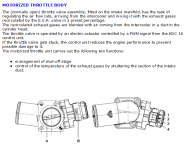Ducato Nat
Member
Good evening. As a newcomer to this forum, I was wondering if somebody could give me some guidance / advice. I have a 2014 Ducato X250, 2.3 jtd engine code F1AE3481D, 160K Miles.
I bought the van a year ago for conversion to a camper. When I got it, it was reluctant to start, eventually narrowed that down to excessive leak off from the injectors preventing sufficient fuel rail pressure on crank. I changed injectors on cyl 1 & 2, starts no problem now.
The issue I have is black smoke under acceleration. When it's ticking over it's fine, passed MOT no problems a couple of weeks ago. I thought maybe smoke issue was due to new injectors not being coded to the ecu so I asked the garage to do that when they had it for MoT. Their tool was unable to communicate with the injector module in the ECU so I took it to an injector specialist, same problem. He did say that the fuel trims were well within spec so he didn't think injectors were a problem.
So further probing showed me that the MAF was reading 17g/s at idle, which seems excessive. Also the MAP was reading 99kpa, also excessive. I pulled the MAP and it was choked with gunk so I thought I'd better have a look in the intake manifold but found it to be clean when I got it off. So the two sensor readings indicated to me that the issue may lie with the throttle body. If I understand correctly the MAF gives a reading of airflow into the engine which the ECU then modulates using the throttle body. The MAF reading also determines how much fuel to inject, so if there's too much airflow everything else gets thrown out. The problem I have is that the throttle body isn't modulating. It remains in the wide open position except on engine shut down when it closes for about 5 seconds. Is this normal or have I got hold of completely the wrong end of the stick regarding how the ECU controls airflow and fuel flow? I've fitted new throttle body also MAF sensor but it seems both of the old ones were functioning normally and the issue lies elsewhere. So if anybody can perhaps shed some light on what's going on with the airflow and also why the injector coding seems to be off limits I would be grateful, since I'm out of ideas now. Also my apologies for the length of this question.
Regards, Nat.
I bought the van a year ago for conversion to a camper. When I got it, it was reluctant to start, eventually narrowed that down to excessive leak off from the injectors preventing sufficient fuel rail pressure on crank. I changed injectors on cyl 1 & 2, starts no problem now.
The issue I have is black smoke under acceleration. When it's ticking over it's fine, passed MOT no problems a couple of weeks ago. I thought maybe smoke issue was due to new injectors not being coded to the ecu so I asked the garage to do that when they had it for MoT. Their tool was unable to communicate with the injector module in the ECU so I took it to an injector specialist, same problem. He did say that the fuel trims were well within spec so he didn't think injectors were a problem.
So further probing showed me that the MAF was reading 17g/s at idle, which seems excessive. Also the MAP was reading 99kpa, also excessive. I pulled the MAP and it was choked with gunk so I thought I'd better have a look in the intake manifold but found it to be clean when I got it off. So the two sensor readings indicated to me that the issue may lie with the throttle body. If I understand correctly the MAF gives a reading of airflow into the engine which the ECU then modulates using the throttle body. The MAF reading also determines how much fuel to inject, so if there's too much airflow everything else gets thrown out. The problem I have is that the throttle body isn't modulating. It remains in the wide open position except on engine shut down when it closes for about 5 seconds. Is this normal or have I got hold of completely the wrong end of the stick regarding how the ECU controls airflow and fuel flow? I've fitted new throttle body also MAF sensor but it seems both of the old ones were functioning normally and the issue lies elsewhere. So if anybody can perhaps shed some light on what's going on with the airflow and also why the injector coding seems to be off limits I would be grateful, since I'm out of ideas now. Also my apologies for the length of this question.
Regards, Nat.


